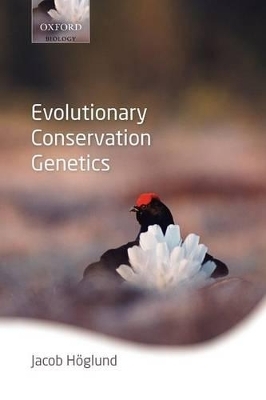
Evolutionary Conservation Genetics
Seiten
2009
Oxford University Press (Verlag)
978-0-19-921422-8 (ISBN)
Oxford University Press (Verlag)
978-0-19-921422-8 (ISBN)
Conservation genetics focuses on understanding the role of genetic variation for population persistence. This book is about the methods used to study genetic variation in endangered species and whether genetic variation matters in the extinction of species.
Conservation genetics focuses on understanding the role and requirement of genetic variation for population persistence. However, considerable debate now surrounds the role of genetic factors (as opposed to non-genetic factors such as habitat destruction etc.) in population extinction, and a comprehensive synthesis is now timely. Can extinction be explained by habitat destruction alone or is lack of genetic variation a part of the explanation? The book thoroughly reviews the arguments for a role of genetics in the present biodiversity crisis. It describes the methods used to study genetic variation in endangered species and examines the influence of genetic variation in the extinction of species.
To date, conservation genetics has predominantly utilized neutral genetic markers e.g. microsatellites. However, with the recent advances in molecular genetics and genomics it will soon be possible to study 'direct gene action', following the fate of genetic variation at the level of DNA, through expression, to proteins in order to determine how such phenotypes fare in populations of free living organisms. Evolutionary Conservation Genetics explores these exciting avenues of future research potential, integrating ecological quantitative genetics with the new genome science. It is now more important than ever that we ask relevant questions about the evolutionary fate of endangered populations throughout the globe and incorporate our knowledge of evolutionary processes and the distribution of genetic diversity into effective conservation planning and action.
Conservation genetics focuses on understanding the role and requirement of genetic variation for population persistence. However, considerable debate now surrounds the role of genetic factors (as opposed to non-genetic factors such as habitat destruction etc.) in population extinction, and a comprehensive synthesis is now timely. Can extinction be explained by habitat destruction alone or is lack of genetic variation a part of the explanation? The book thoroughly reviews the arguments for a role of genetics in the present biodiversity crisis. It describes the methods used to study genetic variation in endangered species and examines the influence of genetic variation in the extinction of species.
To date, conservation genetics has predominantly utilized neutral genetic markers e.g. microsatellites. However, with the recent advances in molecular genetics and genomics it will soon be possible to study 'direct gene action', following the fate of genetic variation at the level of DNA, through expression, to proteins in order to determine how such phenotypes fare in populations of free living organisms. Evolutionary Conservation Genetics explores these exciting avenues of future research potential, integrating ecological quantitative genetics with the new genome science. It is now more important than ever that we ask relevant questions about the evolutionary fate of endangered populations throughout the globe and incorporate our knowledge of evolutionary processes and the distribution of genetic diversity into effective conservation planning and action.
Professor Jacob Höglund was born in Uppsala, Sweden in 1958. He received his BSc (1983), PhD (1989) and DrSci (1992) from the Uppsala University in Sweden. He completed his post doctoral studies in the UK (1990). He has been a Professor at the Uppsala University since 2000 lecturing mainly in Conservation Genetics.
Preface ; 1. The Extinction Vortex - is Genetic Variation Related to Extinction? ; 2. How to Measure Genetic Variation ; 3. Inbreeding, Geographic Subdivision and Gene Flow ; 4. Genetic Diversity in Changing Environments ; 5. Genes Under Selection: Mhc and Others ; 6. Local Adaptation ; 7. Ecological Genomics ; 8. An Evolutionary Conservation Biology ; References ; Index
| Zusatzinfo | 43 line and 6 halftone illustrations |
|---|---|
| Verlagsort | Oxford |
| Sprache | englisch |
| Maße | 156 x 233 mm |
| Gewicht | 347 g |
| Themenwelt | Naturwissenschaften ► Biologie ► Evolution |
| Naturwissenschaften ► Biologie ► Genetik / Molekularbiologie | |
| Naturwissenschaften ► Biologie ► Ökologie / Naturschutz | |
| ISBN-10 | 0-19-921422-0 / 0199214220 |
| ISBN-13 | 978-0-19-921422-8 / 9780199214228 |
| Zustand | Neuware |
| Haben Sie eine Frage zum Produkt? |
Mehr entdecken
aus dem Bereich
aus dem Bereich
Wie die Vernichtung der Arten unser Überleben bedroht - Der …
Buch | Softcover (2023)
Penguin (Verlag)
CHF 20,95


